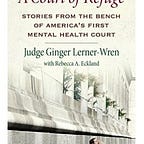The Gifts of Community Collaboration and Social Justice
This holiday season I wanted to express my gratitude to all who work to promote community collaboration, behavioral health and well-being. In Broward County, for example the United Way of Broward County and community partners continue to advance new strategies to promote behavioral health, substance use prevention and quality of life. This past year, an expanded focus on social determinants of health and the desire to create new pathways to opportunity for those in the criminal justice system has led to new alliances. These collaborative relationships are not only a source of hope but a symbol that anything is possible.
Therapeutic Jurisprudence and Problem-Solving Justice
On January 7th, 2020 I begin my 24th year on the bench. In reflection, in addition to community collaboration, it is the law reform science of therapeutic jurisprudence (TJ) which continues to be the gift that keeps on giving. From the first drug court established in Miami-Dade in 1989, to America’s first mental health court in 1997, the problem-solving court movement continues to grow and expand. States across the U.S. and in many countries around the world the concept of problem-solving courts or smart justice is gaining in popularity. For jurisdictions looking for a more humanized approach to respond to trauma and/or adverse childhood experiences, the TJ principles of dignity and restorative justice are uniquely aligned with The Convention of Persons with Disabilities and the promotion of human rights. In this regard, I am honored to serve on the Board of Trustees for the International Society for TJ and invite readers to learn more about TJ.
For me, the spirit of the holidays speaks to the wonders of ordinary people doing extraordinary things. The story of TJ, for example, began with two law Professors, Bruce J. Winick, Professor of Law, The University of Miami, and Professor, David B. Wexler Professor of Law at the University of Puerto Rico and James E. Rogers College of Law in Arizona. They met at The University of Miami in the early 80’s. Their interest and scholarship were in the new field of mental health law and disability rights. They read, analyzed and discussed court rulings. Through their work they came to the realization that often the court processes were anti-therapeutic. They thought about court process, the role of the judge, the lawyers and what invisible forces and conditions influence the emotional and psychological impact of court process. Their concept that courts have the capacity to act as therapeutic agents, if the court process is perceived as fair.
Currently there are literally thousands of problem-solving courts. This includes drug courts, mental health courts, veteran courts, community courts, teen courts, behavioral health, child welfare, DWI, safe baby courts, girl courts, homeless courts, alternative sentencing models such as restorative justice, and youth diversion programs. This highlights the infinite possibility of justice innovation through community collaboration that continues to adapt to respond to fill policy vacuums and resource gaps.
Generosity of Sprit
On social media, the posts of individuals from around the world concerned about how to (for example) advance mental health parity and gender equity in medicine, provide for the safety and well-being of our children, advance disability rights and change the conversation around suicide prevention, ping with intensity. The sharing and respectful exchange of ideas and information across disciplines reminds me there are heroes among us. That through generosity of spirit we can help one another learn more about public health and give voice to the causes that inspire us and give us purpose.
